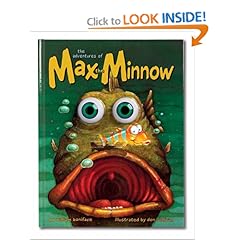Technically, you can buy pork with food stamps, so in some sense food stamps can be a proxy for pork
But in the sense of
"corruptly ineffectual public spending" it's clear that food stamps are not pork.
I know what I'm talking about. I've been there.
In the mid-1960s, I was a preteen in a working-poor family. My father worked; my mother raised the kids. They were Catholics, which meant that the had to have sex and not to have birth control. The eleven kids were God's will.
Feeding them, however, was difficult to a poorly educated millhand. At one point, his back was injured at work. We never learned the details but it involved surgery and wearing a barrel-shaped plaster-of-paris from his hip to his chest, in the heat of the summer. This I remember quite well, and it could not have been comfortable. More to the point, he couldn't work. There was no-one else to feed the family.
For a while, there was government surplus food. It came packaged like something from the Army or the Soviet Union. There were large brown paper bags labelled "BULGAR WHEAT" in black sans-serif font. What you did with bulgar wheat was never clear, but the bags were big.
There were bags of CORNMEAL (which made terrible mush but GREAT corn bread; I wish I had some of that right now!) and COLD ROLLED OATS (it made oatmeal so lumpy I still go EUW!), clear plastic bags of "RED KIDNEY BEANS" (good with the cornbread!), cans of "MEAT PRODUCT" (very strange stuff) and, worst of all, boxes of "MILK, DRIED". It seems to have been designed to be reconstituted by machine, perhaps a shipboard mixer. With the tools we had on hand (a pitcher and a big spoon) it turned out terrible stuff!
Food stamps were a great improvement over surplus food. With them, you could go to an actual store and get actual food. Mom was very good with figuring out sales. She'd often negotiate for slightly spoiled fruit, and then either cook with it, or dry it so you couldn't tell.
Also, the dried milk you got at the store could be mixed into actual milk without a machine. It and the other food at the store was aimed at the general public, not people with access to institutional kitchens.
At first, there was a problem with making change. The foodstamps were denominated in whole dollar units (like money: one, twos, fives, etc.)
It was rare that a grocery purchase would come out to an exact dollar amount. At first, the storekeeper would write a chit for the change, e.g. 13cents.
You'd use the chits as an oddly-denominated food stamp. This was a pain, and wasteful at time. Eventually the government figured out that giving out under a dollar's worth of change would be o.k.
(Of course, giving change also gave Ronald Reagan a story to tell, about a woman and an orange and a bottle of vodka. But he was a notorious liar; I doubt anyone actually believed him who thought about it, they just agreed with his sentiment.)I mention my actual experience as background to my thoughts on the use of foodstamps today.
Food stamps are one of the most effective ways of stimulating our economy; the money is spent locally and immediately, generating local jobs. People working at those jobs spend their wages, generating more jobs. Due to this multiplier effect, our government gets back something like $1.50 in tax revenue out of every dollar spent on food stamps.
It also serves the important public purpose of nourishing children during the years of brain formation so that they are more productive as adults.
Food stamps also stabilize the farm economy, by ensuring a market for farm products when the economy was slow. Before food stamps, our government bought up and distributed surplus food; is it not better to let the private sector do that (through private brands, warehouses and supermarkets) than the government-run Commodity Food program?
Finally, food stamps are an efficient means of carrying out the command
"Feed the hungry" as ordered by George W Bush's favorite philosopher.
I go into this at length because there are still people who object to food stamps as pork.
Well, maybe it is, and maybe it isn't, but food stamps are a great idea. If you don't like them, come up with something better!
 The I Can Read series is about the same reading level as staplebacks, but more durable. Instead of a staple, the binding is glued and you can read the title on it. They're about 9 x 6 inches and group together well with series of comparable size, e.g. American Girl.
The I Can Read series is about the same reading level as staplebacks, but more durable. Instead of a staple, the binding is glued and you can read the title on it. They're about 9 x 6 inches and group together well with series of comparable size, e.g. American Girl. An exception is the Wiggle Eyes series, e.g. Max the Minnow, which feature googly eyes; these sell very quickly
An exception is the Wiggle Eyes series, e.g. Max the Minnow, which feature googly eyes; these sell very quickly 
